Skype stores openly all the history of your conversation on your computer. It is quite easy to steal the history files and with the help of some special software one can view all the history without your Skype password.
It is not always convenient to stop saving Skype histories as sometimes you might need to search for some important information there. Besides even if you stop saving Skype history the program will still write all the messages to its database and will delete them only upon quitting. And the events history (who and when you talked to) is never deleted from the database.
Here are some ideas on how to protect a Skype profile (including all the histories) by encrypting the profile, i.e. storing profile files on the encrypted volume or in the encrypted container.
If there is no encrypted volume or container it is very easy to create one with the help Cryptic Disk. Just go through the instructions:
How to Create an Encrypted Container
How to Encrypt a Volume
If you are using a portable Skype version check the section:
How to Encrypt PortableApps
This section tells how to move a Skype profile to an encrypted volume and all the options that “teach” Skype to work with the encrypted profile.
So there is an encrypted volume (or container).
1. First disable the automatic start up for Skype upon system start-up (later you will set Skype to launch automatically upon mounting the encrypted volume). Go to the main menu “Tools” -> “Options” for Skype settings configuration window. Untick “Start Skype when I start Windows” in the “General settings” tab.
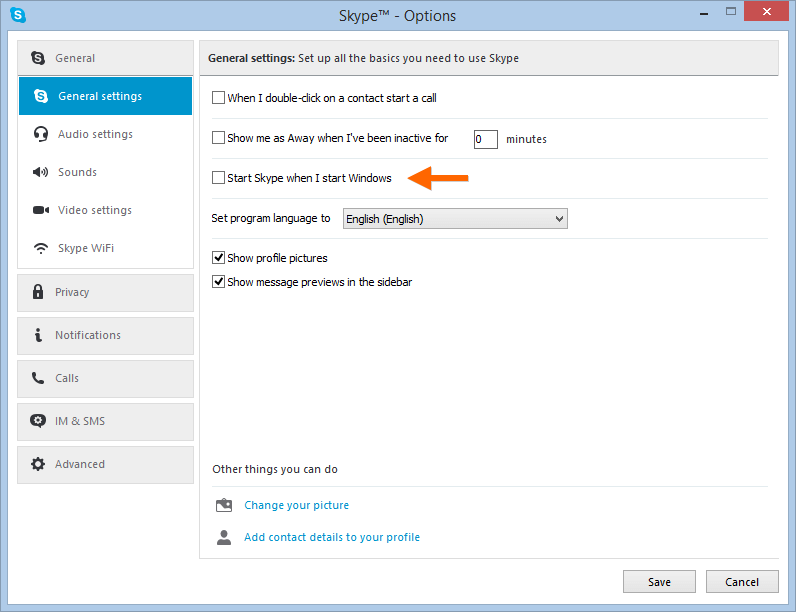
2. Enter the password and mount the encrypted volume to any free letter. Please remember the letter to always mount the volume to it since the Skype profile will be set to work with this volume letter (later you will set the encrypted volume to mount to this letter automatically). For example, select the “M:” letter.
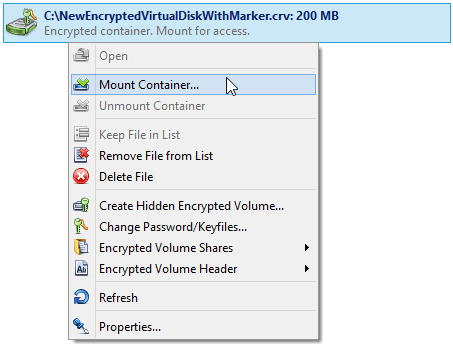
3. Quit Skype (right-click on the Skype icon in the system tray and choose “Quit Skype” in the menu).
4. Find the Skype profile folder. By default it is stored in the current user folder and is called “Skype”, e.g. “C:\Users\p.smitt\AppData\Roaming\Skype” (specify your profile name in “p.smitt”). Move the folder to the mounted encrypted volume (to move it use Cut command in the explorer window and Paste command in the mounted encrypted volume).
Now the Skype profile folder is on the encrypted volume and secured and protected by the state-of-art cryptographic algorithms.
5. Now you set a path to the Skype profile on the encrypted volume. The thing is that upon next launch Skype will not find the profile folder in its place (where you’ve moved it out) and will close. To resolve this you have to create a symbolic link where the Skype profile folder was stored so that the symbolic link will refer to the encrypted volume.
To create a symbolic link you need the command line. Press “Win+R” keys and enter “cmd” in the opened window. To create a link in the command line, enter a specific command of the following format:
mklink /D "C:\Users\p.smitt\AppData\Roaming\Skype" "M:\Skype"
mklink - a command for creating a symbolic link
(/D parameter identifies the folder link creation);
"C:\Users\p.smitt\AppData\Roaming\Skype" -
is an absolute path to the original Skype profile folder,
which we moved in step 4.
"M:\Skype" -
is an absolute path to the new place
where Skype profile folder is stored.
Press “Enter” key and check that the symbolic link is successfully created.

mklink command is available in Windows 7 and higher. If your operating system is older you need to download and install some software for creating symbolic links (i.e. Junction by Mark Russinovich).
Now your Skype profile is secured and protected as it is stored on the encrypted volume and accessible only when the encrypted volume is mounted (connected to the system). If you launch Skype but do not mount the encrypted volume then Skype won’t be able to access your profile.
For more convenient work you need to configure some advanced settings.
6. Open the encrypted volume properties (in the context menu of the encrypted volume, Cryptic Disk main window).
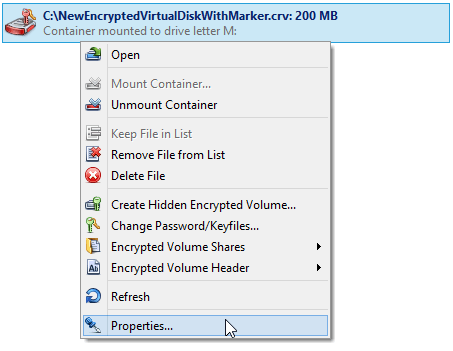
7. In order to save the effort of constant selection of the “M:” letter for the volume configure the “Save the mounting settings for the volume” option in the container properties and select the “M:” letter there. Now the software will always mount the container to the “M:” letter. Also it is highly recommended to enable the “Mount as removable volume” option.
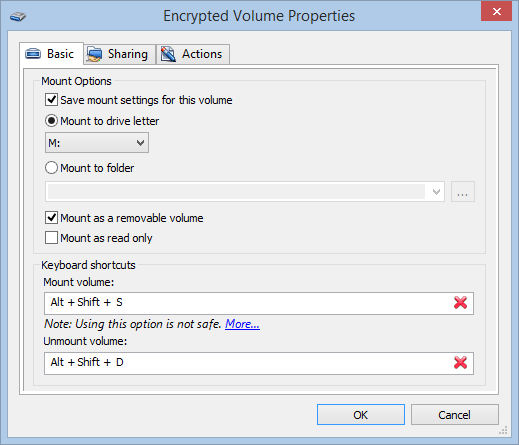
Here also you can configure hotkeys for mounting/unmounting of the encrypted container.
8. You can set Skype to be automatically launched when the encrypted volume is mounted. To do that go to the “Actions” tab in the encrypted container settings window and select the “After Mounting” subtab and click the “Add” button. Select the “Run programm…” option in the drop-down menu.
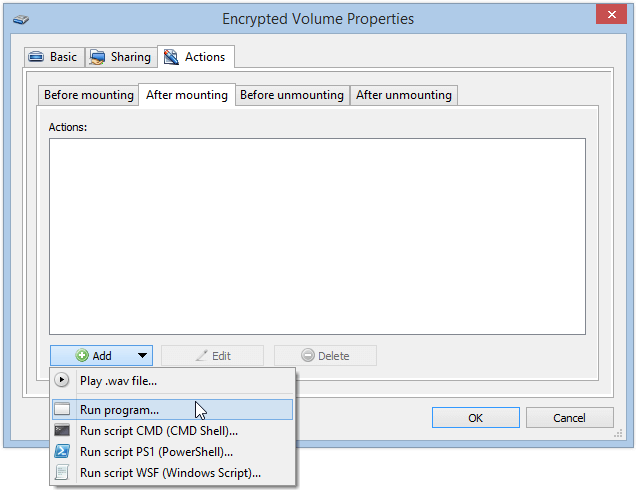
You should specify the path to the Skype executable file in the window.
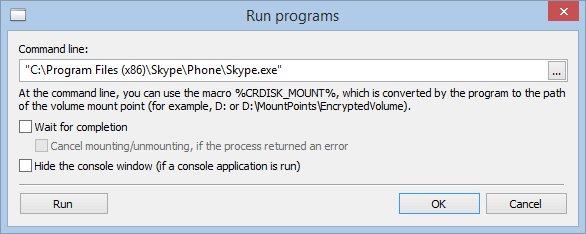
In 64bit operating systems Skype is stored at “C:\Program Files (x86)”, in 32bit ones at “C:\Program Files”.
Click the “OK” button in the launch settings window.
9. It is highly recommended to close Skype and quit it before unmounting the encrypted volume i.e. before stopping access to the encrypted Skype profile. Cryptic Disk enables you to set Skype to automatically quit before unmounting the encrypted volume. To do that go to the “Actions” tab in the encrypted container settings window and select the “After Mounting” subtab and click the “Add” button. Select the “Run programm…” option in the drop-down menu.
You should specify the path to the Skype executable file in the window with the “/shutdown” parameter. You can also enable the “Wait for completion” option so that the software will wait for Skype to shutdown and only then proceed to unmounting.

Note that the path to the executable file has to be with “ (quotation mark) since it has spaces.
Now your profile and its whole history and contact lists are secured and encrypted. To start Skype just enter the password and mount the encrypted volume. The encrypted Skype profile will connect to the system and the Skype application itself will start. To close Skype (or block access to the profile) just unmount the encrypted disk and Skype will quit automatically. Upon system shutdown (even an incorrect one) all the encrypted volumes will be automatically unmounted.
Enjoy your safe communication over Skype!
